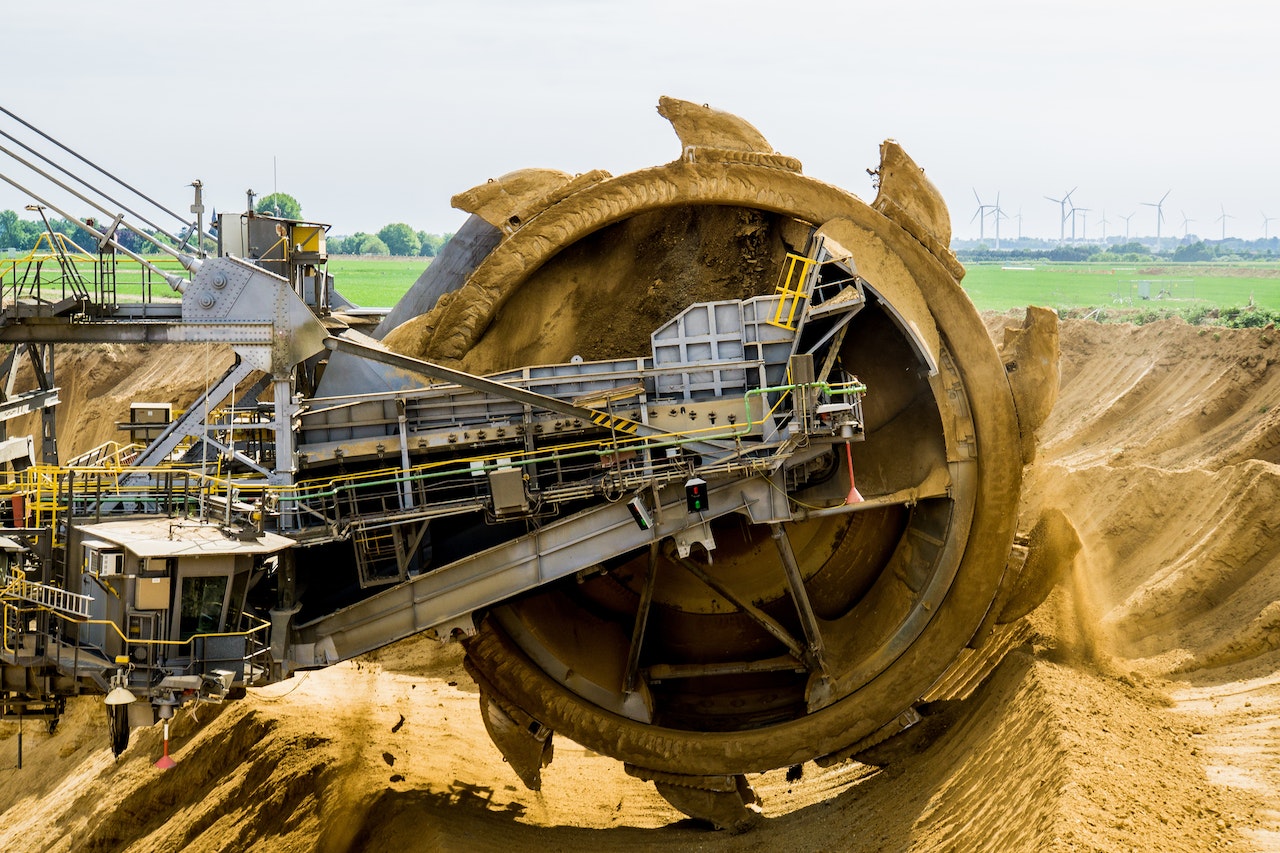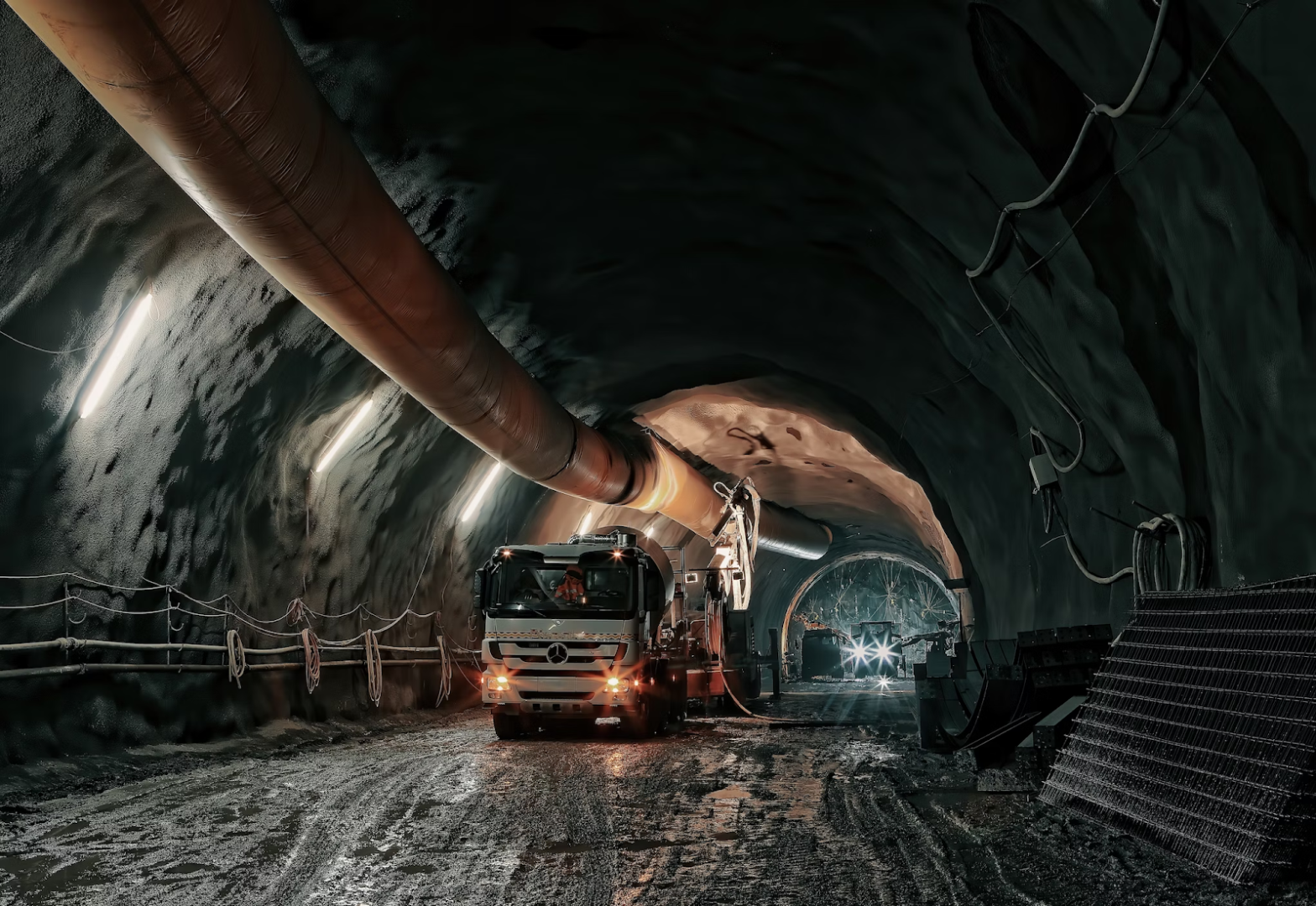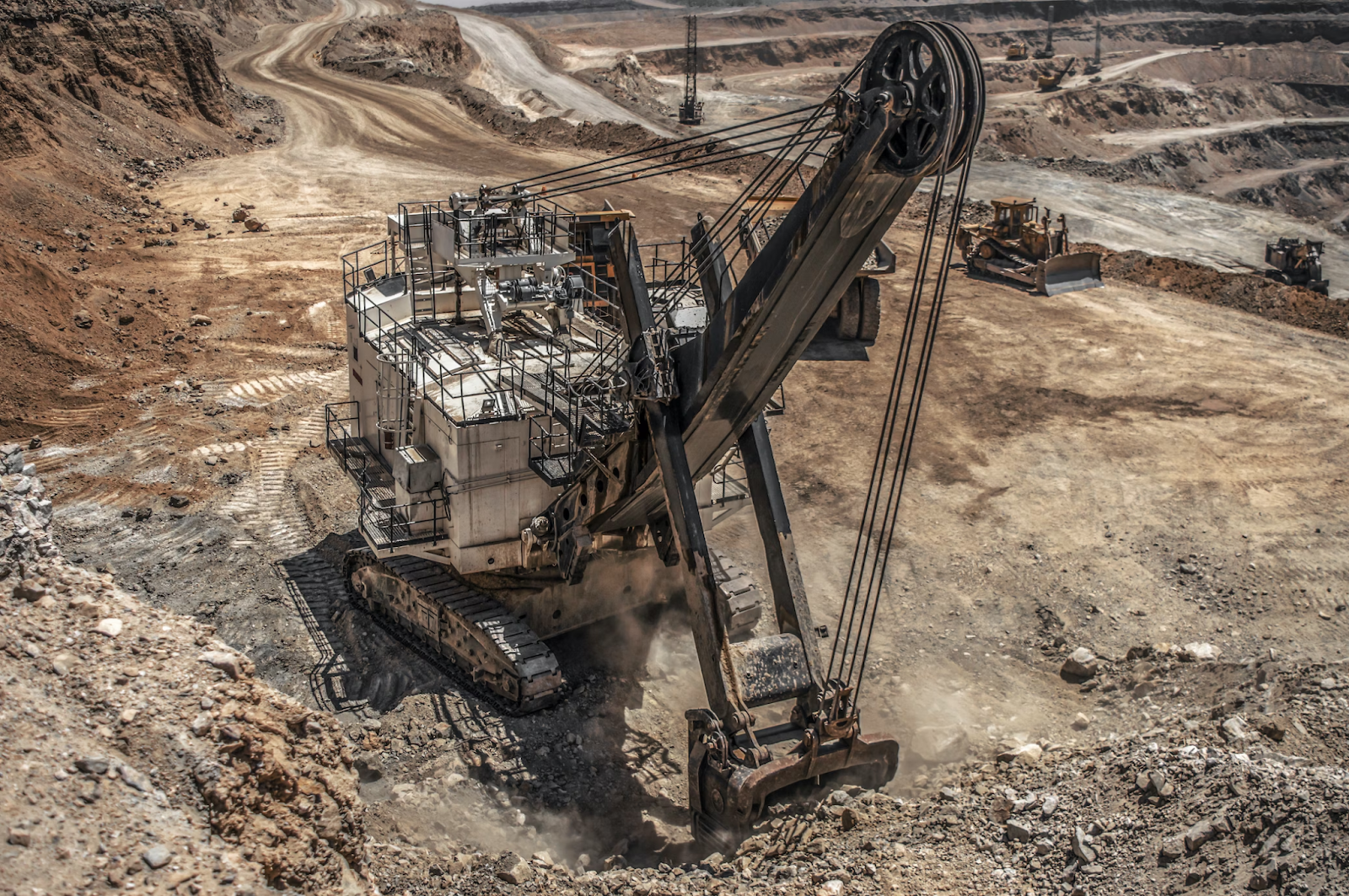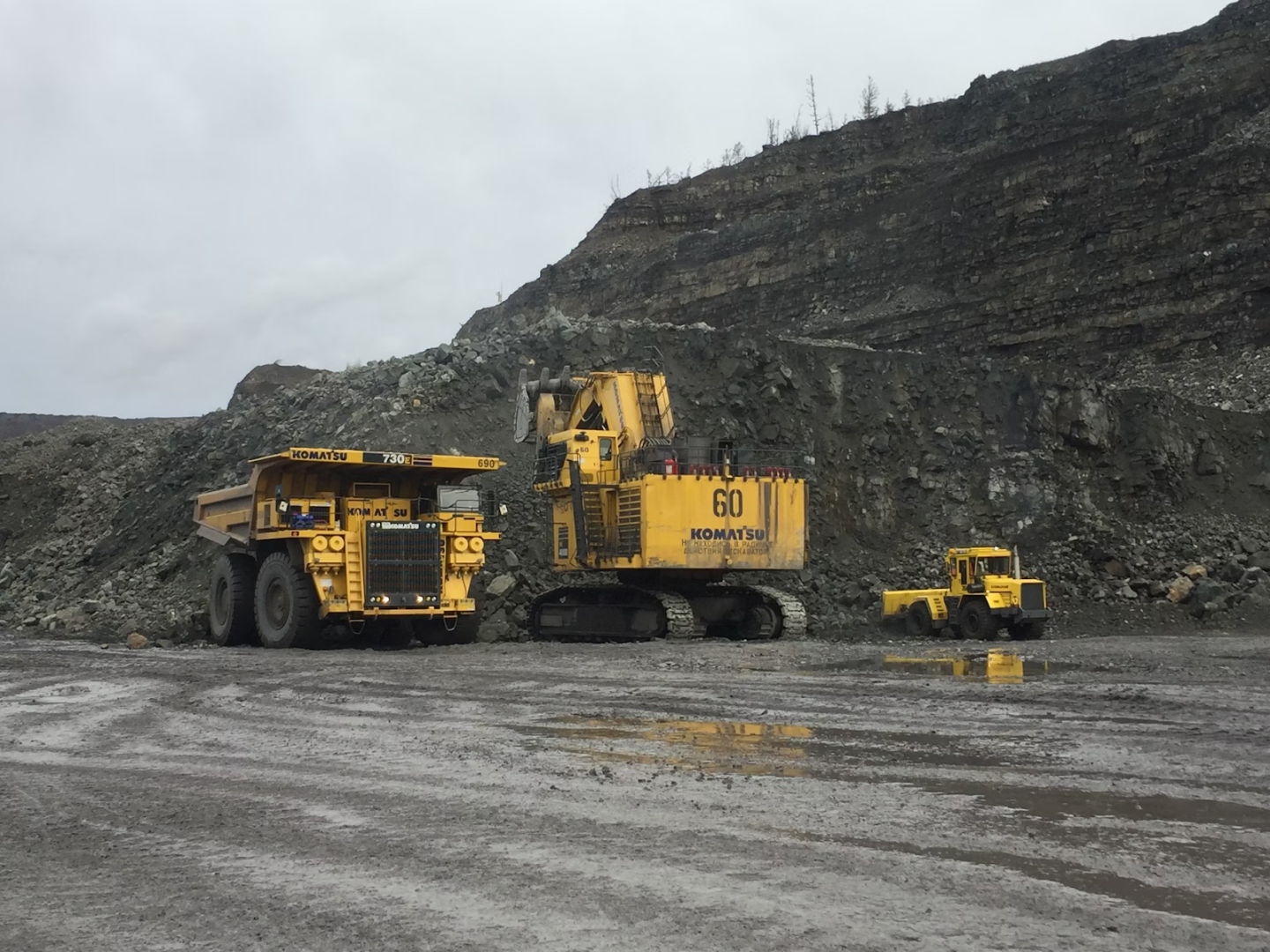TECHNOLOGY
From Pickaxes to Autonomous Robots

As we delve into the fascinating world of mining, we journey back to a time when laborers chipped away at the earth with nothing more than pickaxes and hope.
Mining, an endeavor as old as civilization itself, has undergone a sweeping transformation over the centuries. From the Bronze Age miners to the autonomous robots of today, the evolution of mining techniques is a compelling tale of human ingenuity, endurance, and our relentless pursuit of resources. This journey introduces us to a wide array of tools and methods, each era marking a significant leap in technology compared to the previous, from hand tools to explosives, tunneling, and now, the era of autonomous machines.
Buckle up and join us as we traverse through time to explore the remarkable evolution of mining techniques: from the humble pickaxe to the sophisticated, self-driven robots that are redefining the mining landscape today.

Hand Tools and Human Tenacity
In the nascent days of mining, humans employed rudimentary hand tools such as pickaxes, shovels, and chisels to extract valuable resources from the earth. Labor was intensive, and the scale of operations was limited. Nevertheless, these early methods laid the groundwork for the mining industry and showcased the resilience and tenacity of humanity. Despite the risks and hardships, miners persevered, fueled by the promise of reward and the advancement of their communities.
Moreover, it was during this period that miners developed a set of processes to extract resources and created organizations to manage operations. They acquired the knowledge to identify mineral-rich areas and organized themselves with an advanced degree of sophistication. With the advent of black powder in the 11th century, miners had access to explosives that allowed them to expand their scope of operations – blasting through hard rock and tunneling into the depths of the earth. This ushered in a new period of innovation that saw mining develop at an accelerated rate.
Engineering and Automation

The 19th century brought about the Industrial Revolution, a period that saw tremendous advances in science and engineering. This opened up new opportunities for mining operations to scale up and mechanize processes, with machines such as steam-powered drills making it easier to bore into hard rock. Mines were now able to tunnel deeper than ever before, with human labor supplemented by a range of machines. This allowed miners to increase their efficiency and extract resources at a much faster rate. Namely, the experts from Austin Engineering suggest that innovative engineering solutions help to maximize productivity as well as profits. This included rapid advancements in safety technologies, with the introduction of artificial ventilation systems and dust extraction devices helping to reduce the risk for miners.
As we move into the modern age, automation has become the norm in mining operations around the world. Autonomous robots are now being used to survey mine sites, analyze data, and carry out tasks such as drilling and blasting with minimal human intervention. By leveraging the potential of technology, miners can enhance productivity and lower expenses. Moreover, these automated machines have revolutionized mining operations, enabling them to function with heightened safety and efficiency in hazardous environments.
Intelligent Robots and Future Prospects
As we venture further into the 21st century, intelligent robots are becoming more prevalent in mining operations. These self-learning machines, powered by advancements in artificial intelligence (AI), are capable of performing complex tasks and making decisions autonomously. With the help of machine learning algorithms, they are able to analyze vast amounts of data to predict patterns and trends, enabling them to optimize mining processes for efficiency and safety.
Moreover, the rise of the Internet of Things (IoT) has allowed these robots to be interconnected, leading to a more integrated and streamlined operation. While these advancements promise a more efficient and safer future for the mining industry, the transition also brings about its own set of challenges and questions, such as the impact on employment and the need for robust cybersecurity measures. With continued research and development, the industry is set to tackle these challenges head-on, paving the way for an exciting new era of mining.
Sustainable Mining and Environmental Considerations

As we march towards a future dominated by automation and AI, another crucial aspect to consider is the environmental impact of mining operations. To address these concerns, the mining industry has been exploring sustainable mining techniques and technologies. One such approach is the use of solar power and other renewable energy sources to reduce greenhouse gas emissions associated with mining operations. Additionally, water management techniques are being implemented to minimize water usage and prevent contamination of local water sources.
Furthermore, the industry is leveraging technology to improve waste management. By incorporating advanced waste processing technologies, mining operations can reduce the volume of waste produced and repurpose it for other uses. For example, some operations are turning to bioleaching, a process that utilizes bacteria to extract metals from ores and reduces the need for hazardous chemicals.
Another promising avenue is the adoption of land rehabilitation practices after mining operations cease. Land rehabilitation involves restoring the mined land to its original state or repurposing it for other constructive uses. With these sustainable practices and technologies in place, mining operations can minimize their ecological footprint and contribute to a more sustainable future.
The Future of Mining
As technology continues to evolve at a rapid pace, so too does the mining industry. Autonomous machines are becoming more sophisticated and efficient, capable of carrying out a range of complex tasks with ease. Artificial intelligence is being used to analyze data from sensors embedded in the machines, allowing them to make informed decisions on the fly.
Moreover, advances in robotics allow autonomous robots to navigate through difficult terrain and hazardous conditions that have traditionally been too dangerous for human workers.
The future of mining will no doubt be shaped by technology, with intelligent machines and automation taking on an increasingly prominent role in the industry.
Autonomous robots offer an exciting glimpse into what is possible and are paving the way for a new era of efficient and safe mining operations. We can only imagine what incredible leaps will be made in the coming years as we continue to explore the remarkable evolution of mining techniques: from the humble pickaxe to the sophisticated, self-driven robots of today.
The mining industry’s evolution exemplifies how technological progress can utterly transform an entire sector. From the era of rudimentary pickaxes to today’s sophisticated autonomous robots, mining has undergone a radical transformation, heralding massive boosts in productivity, safety, and efficiency. The journey hasn’t been without challenges, but the industry’s commitment to innovation ensures that these hurdles become stepping stones towards a more sustainable and profitable future.
Looking ahead, as AI, IoT, and robotics continue to evolve, they promise to usher in even more groundbreaking changes, continually redefining what is possible in mining. The future indeed looks bright, as the industry harnesses the power of technology to ensure a safer, more efficient, and environmentally conscious future for mining.
TECHNOLOGY
Next-gen chips, Amazon Q, and speedy S3

AWS re:Invent, which has been taking place from November 27 and runs to December 1, has had its usual plethora of announcements: a total of 21 at time of print.
Perhaps not surprisingly, given the huge potential impact of generative AI – ChatGPT officially turns one year old today – a lot of focus has been on the AI side for AWS’ announcements, including a major partnership inked with NVIDIA across infrastructure, software, and services.
Yet there has been plenty more announced at the Las Vegas jamboree besides. Here, CloudTech rounds up the best of the rest:
Next-generation chips
This was the other major AI-focused announcement at re:Invent: the launch of two new chips, AWS Graviton4 and AWS Trainium2, for training and running AI and machine learning (ML) models, among other customer workloads. Graviton4 shapes up against its predecessor with 30% better compute performance, 50% more cores and 75% more memory bandwidth, while Trainium2 delivers up to four times faster training than before and will be able to be deployed in EC2 UltraClusters of up to 100,000 chips.
The EC2 UltraClusters are designed to ‘deliver the highest performance, most energy efficient AI model training infrastructure in the cloud’, as AWS puts it. With it, customers will be able to train large language models in ‘a fraction of the time’, as well as double energy efficiency.
As ever, AWS offers customers who are already utilising these tools. Databricks, Epic and SAP are among the companies cited as using the new AWS-designed chips.
Zero-ETL integrations
AWS announced new Amazon Aurora PostgreSQL, Amazon DynamoDB, and Amazon Relational Database Services (Amazon RDS) for MySQL integrations with Amazon Redshift, AWS’ cloud data warehouse. The zero-ETL integrations – eliminating the need to build ETL (extract, transform, load) data pipelines – make it easier to connect and analyse transactional data across various relational and non-relational databases in Amazon Redshift.
A simple example of how zero-ETL functions can be seen is in a hypothetical company which stores transactional data – time of transaction, items bought, where the transaction occurred – in a relational database, but use another analytics tool to analyse data in a non-relational database. To connect it all up, companies would previously have to construct ETL data pipelines which are a time and money sink.
The latest integrations “build on AWS’s zero-ETL foundation… so customers can quickly and easily connect all of their data, no matter where it lives,” the company said.
Amazon S3 Express One Zone
AWS announced the general availability of Amazon S3 Express One Zone, a new storage class purpose-built for customers’ most frequently-accessed data. Data access speed is up to 10 times faster and request costs up to 50% lower than standard S3. Companies can also opt to collocate their Amazon S3 Express One Zone data in the same availability zone as their compute resources.
Companies and partners who are using Amazon S3 Express One Zone include ChaosSearch, Cloudera, and Pinterest.
Amazon Q
A new product, and an interesting pivot, again with generative AI at its core. Amazon Q was announced as a ‘new type of generative AI-powered assistant’ which can be tailored to a customer’s business. “Customers can get fast, relevant answers to pressing questions, generate content, and take actions – all informed by a customer’s information repositories, code, and enterprise systems,” AWS added. The service also can assist companies building on AWS, as well as companies using AWS applications for business intelligence, contact centres, and supply chain management.
Customers cited as early adopters include Accenture, BMW and Wunderkind.
Want to learn more about cybersecurity and the cloud from industry leaders? Check out Cyber Security & Cloud Expo taking place in Amsterdam, California, and London. Explore other upcoming enterprise technology events and webinars powered by TechForge here.
TECHNOLOGY
HCLTech and Cisco create collaborative hybrid workplaces

Digital comms specialist Cisco and global tech firm HCLTech have teamed up to launch Meeting-Rooms-as-a-Service (MRaaS).
Available on a subscription model, this solution modernises legacy meeting rooms and enables users to join meetings from any meeting solution provider using Webex devices.
The MRaaS solution helps enterprises simplify the design, implementation and maintenance of integrated meeting rooms, enabling seamless collaboration for their globally distributed hybrid workforces.
Rakshit Ghura, senior VP and Global head of digital workplace services, HCLTech, said: “MRaaS combines our consulting and managed services expertise with Cisco’s proficiency in Webex devices to change the way employees conceptualise, organise and interact in a collaborative environment for a modern hybrid work model.
“The common vision of our partnership is to elevate the collaboration experience at work and drive productivity through modern meeting rooms.”
Alexandra Zagury, VP of partner managed and as-a-Service Sales at Cisco, said: “Our partnership with HCLTech helps our clients transform their offices through cost-effective managed services that support the ongoing evolution of workspaces.
“As we reimagine the modern office, we are making it easier to support collaboration and productivity among workers, whether they are in the office or elsewhere.”
Cisco’s Webex collaboration devices harness the power of artificial intelligence to offer intuitive, seamless collaboration experiences, enabling meeting rooms with smart features such as meeting zones, intelligent people framing, optimised attendee audio and background noise removal, among others.
Want to learn more about cybersecurity and the cloud from industry leaders? Check out Cyber Security & Cloud Expo taking place in Amsterdam, California, and London. Explore other upcoming enterprise technology events and webinars powered by TechForge here.
TECHNOLOGY
Canonical releases low-touch private cloud MicroCloud

Canonical has announced the general availability of MicroCloud, a low-touch, open source cloud solution. MicroCloud is part of Canonical’s growing cloud infrastructure portfolio.
It is purpose-built for scalable clusters and edge deployments for all types of enterprises. It is designed with simplicity, security and automation in mind, minimising the time and effort to both deploy and maintain it. Conveniently, enterprise support for MicroCloud is offered as part of Canonical’s Ubuntu Pro subscription, with several support tiers available, and priced per node.
MicroClouds are optimised for repeatable and reliable remote deployments. A single command initiates the orchestration and clustering of various components with minimal involvement by the user, resulting in a fully functional cloud within minutes. This simplified deployment process significantly reduces the barrier to entry, putting a production-grade cloud at everyone’s fingertips.
Juan Manuel Ventura, head of architectures & technologies at Spindox, said: “Cloud computing is not only about technology, it’s the beating heart of any modern industrial transformation, driving agility and innovation. Our mission is to provide our customers with the most effective ways to innovate and bring value; having a complexity-free cloud infrastructure is one important piece of that puzzle. With MicroCloud, the focus shifts away from struggling with cloud operations to solving real business challenges” says
In addition to seamless deployment, MicroCloud prioritises security and ease of maintenance. All MicroCloud components are built with strict confinement for increased security, with over-the-air transactional updates that preserve data and roll back on errors automatically. Upgrades to newer versions are handled automatically and without downtime, with the mechanisms to hold or schedule them as needed.
With this approach, MicroCloud caters to both on-premise clouds but also edge deployments at remote locations, allowing organisations to use the same infrastructure primitives and services wherever they are needed. It is suitable for business-in-branch office locations or industrial use inside a factory, as well as distributed locations where the focus is on replicability and unattended operations.
Cedric Gegout, VP of product at Canonical, said: “As data becomes more distributed, the infrastructure has to follow. Cloud computing is now distributed, spanning across data centres, far and near edge computing appliances. MicroCloud is our answer to that.
“By packaging known infrastructure primitives in a portable and unattended way, we are delivering a simpler, more prescriptive cloud experience that makes zero-ops a reality for many Industries.“
MicroCloud’s lightweight architecture makes it usable on both commodity and high-end hardware, with several ways to further reduce its footprint depending on your workload needs. In addition to the standard Ubuntu Server or Desktop, MicroClouds can be run on Ubuntu Core – a lightweight OS optimised for the edge. With Ubuntu Core, MicroClouds are a perfect solution for far-edge locations with limited computing capabilities. Users can choose to run their workloads using Kubernetes or via system containers. System containers based on LXD behave similarly to traditional VMs but consume fewer resources while providing bare-metal performance.
Coupled with Canonical’s Ubuntu Pro + Support subscription, MicroCloud users can benefit from an enterprise-grade open source cloud solution that is fully supported and with better economics. An Ubuntu Pro subscription offers security maintenance for the broadest collection of open-source software available from a single vendor today. It covers over 30k packages with a consistent security maintenance commitment, and additional features such as kernel livepatch, systems management at scale, certified compliance and hardening profiles enabling easy adoption for enterprises. With per-node pricing and no hidden fees, customers can rest assured that their environment is secure and supported without the expensive price tag typically associated with cloud solutions.
Want to learn more about cybersecurity and the cloud from industry leaders? Check out Cyber Security & Cloud Expo taking place in Amsterdam, California, and London. Explore other upcoming enterprise technology events and webinars powered by TechForge here.
-

 WORDPRESS6 days ago
WORDPRESS6 days ago9 Best WooCommerce Multi Vendor Plugins (Compared)
-

 SEO6 days ago
SEO6 days agoGoogle March 2024 Core Update Officially Completed A Week Ago
-

 MARKETING5 days ago
MARKETING5 days agoNavigating the Video Marketing Maze: Short-Form vs. Long-Form
-

 SEO6 days ago
SEO6 days agoGoogle Declares It The “Gemini Era” As Revenue Grows 15%
-

 SEARCHENGINES6 days ago
SEARCHENGINES6 days agoGoogle March 2024 Core Update Finished April 19, 2024
-
SEARCHENGINES7 days ago
Daily Search Forum Recap: April 25, 2024
-
![The Current State of Google’s Search Generative Experience [What It Means for SEO in 2024] person typing on laptop with](https://articles.entireweb.com/wp-content/uploads/2024/04/The-Current-State-of-Googles-Search-Generative-Experience-What-It.webp-400x240.webp)
![The Current State of Google’s Search Generative Experience [What It Means for SEO in 2024] person typing on laptop with](https://articles.entireweb.com/wp-content/uploads/2024/04/The-Current-State-of-Googles-Search-Generative-Experience-What-It.webp-80x80.webp) MARKETING6 days ago
MARKETING6 days agoThe Current State of Google’s Search Generative Experience [What It Means for SEO in 2024]
-
SEARCHENGINES5 days ago
Daily Search Forum Recap: April 26, 2024















